The American Revolution led to the ultimate freedom of the American colonies from the British rule that started on April 19, 1775. The battles of Lexington and Concord were the two battles that first erupted after a long period of conflicts and occasional violence.
In 1781 America gained victory over the British after a war that lasted seven years. The war at Yorktown, Virginia, marked the end of the revolution while fighting continued into the fall of 1783.
On September 3, 1783, representatives of King George III from Britain and the United States signed the Treaty of Paris, formally ending the conflict.
The Combat of Yorktown fought in October of 1781, was the American
Where did the American Revolution’s final fight take place?
Content
General Lord Cornwallis surrendered his sword and troops to General George Washington and the Continental and French armies following the Revolutionary War’s decisive battle in Yorktown, Virginia, on October 19british, 1781.
What was the American Revolution’s final war?
The siege of Yorktown, known as the Battle of Yorktown, the Yorktown capitulation, or the German conflict, took place in Yorktown, Virginia, from September 28, 1781, to October 19, 1781. It was the last battle of the American Revolution.
Siege of Yorktown
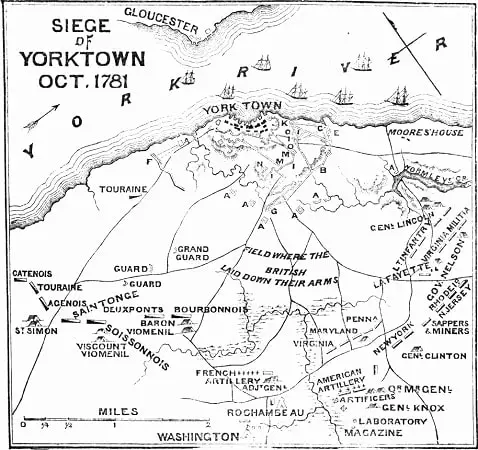
The siege of Yorktown, the last battle of the American Revolution, began on the 28th of September 1781 in Yorktown, Virginia, and ended on the 19th of October 1781.
Lieutenant General Charles Cornwallis commanded the British army, General George led the American Continental Army forces, and Comte de Rochambeau led the French Army troops.
In 1780, around 5,500 French soldiers came to assist the Americans in Rhode Island. In the summer of 1781, north of New York City and further advanced towards Virginia in the south, deceiving the British into thinking a siege of New York was intended.
At the Battle of the Chesapeake, De Grasse destroyed a British fleet led by Sir Thomas Graves in early September, who had joined to help Cornwallis. This victory resulted in hindrance in receiving reinforcements or fleeing by sea.
By late September, Washington and Rochambeau had arrived, and the army and navy had encircled Cornwallis entirely.
On October 19, the surrender ceremony took place with the capture of over 7,000 British soldiers. Soon after, the Treaty of Paris of 1783 was formed between the US and the UK.
Initial movements
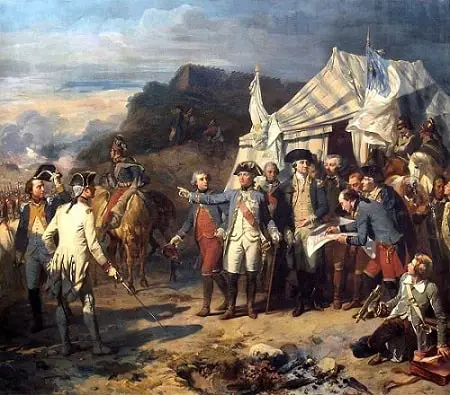
Washington had the leadership of an army of 7,800 Frenchmen, 3,100 militaries, and 8,000 Continentals on the 26th of September. While on the 28th of September, he led the troops out of Williamsburg to encircle Yorktown.
The left position was occupied by the French likewise, the Americans occupied the right position.
As Washington drew his forces closer to Yorktown on September 29, the British started firing, and after a series of redoubts, Cornwallis finally withdrew from his outer defenses. The abandoned defenses were seized by the Americans and the French and gained control.
The French were defeated as they attacked the British on September 30. After a troop led by Marquis de Choisy set out, the British retreated.
Bombardment
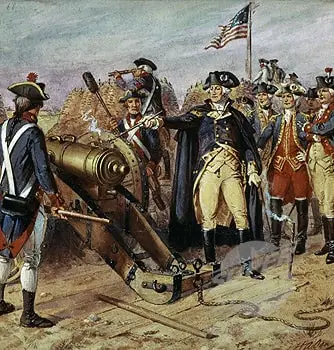
On the 6th of October, the French were to falsely attack the British force to distract them, as the Americans constructed a trench. However, the British came to know about this plan and directed their fire at the French.
The British noticed the trench, but by then, the Americans had all their guns adequately placed, making the British cease fire.
On the 9th of October, the French guns started an open fire, forcing the British to rush to cross the York River to avoid capture.
Washington ordered that the cannons be fired continuously throughout the night to prevent the British from makingd repairs, making the guns silent.
The French opened fire on the ships belonging to the British, hitting the HMS Charon of the British and igniting the fire to more than 3 ships.
The British fire continued throughout the night, and Cornwallis had no idea the Americans across the river were digging a new parallel. The allied soldiers were on the new line by the morning of the 12th.
Assault on the redoubts

According to Washington’s plan, the French would launch a distracting attack on the British, then assault redoubt nine and the Americans’ redoubt ten half an hour later.
The regular soldiers of the French force would attack the redoubt nine that would be followed by the attack on the redoubt ten by the French light infantry forces.
The diversionary attack began around 6:30 p.m. with gunfire. Movements in other parts of the line made the British fear the Americans were preparing for an attack on Yorktown.
The Americans began redoubt No. 10, and Hamilton despatched Lieutenant Colonel John Laurens toward the redoubt’s rear end in order to stop the British force from leaving.
With their axes in hand, the Americans arrived at the redoubt and began hacking away at the British wooden walls.
The British then opened fire on the Americans, and the Americans retaliated by assaulting the redoubt with their bayonets. They chopped their way through the ends, across a ditch climbing the redoubt’s walls.
After capturing redoubts nine and ten, Washington fired from all the directions at the town while the allies put some cannons toward both nine and ten redoubts.
On October 16, more guns were added to the American side, and the fire became more intense. Out of desperation, Cornwallis transferred his forces from the York River to Gloucester Point to escape Virginia and headed to New York.
The first group of the boats passed through, but a storm hit as they came back to pick up additional men.
British surrender
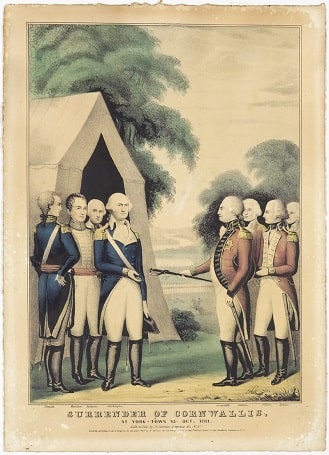
Cornwallis explained to his commanders that they were in a hopeless situation as forces kept adding on the American side and firing kept getting intense. They waved a white handkerchief on October 17, and the bombardment stopped, followed by leading the blindfolded officer behind the lines of French and American forces.
On October 18, Lieutenant Colonel Thomas Dundas and Major Alexander Ross from the side of the British, Lieutenant Colonel Laurens, from the side of the Americans, and Marquis de Noailles, from the side of the French went into the negotiation at the Moore House.
The British had requested their soldiers to march out with flags flying, bayonets drawn, and a band playing American or French music to tribute to the victorious, but Washington refused to claim the British had denied the defeated American troops at the siege of Charleston the year before.
When Lincoln accepted Cornwallis’ deputy’s sword, the surrender was complete.
After the surrender, the American and French officers hosted a supper for the British officers.
After the war
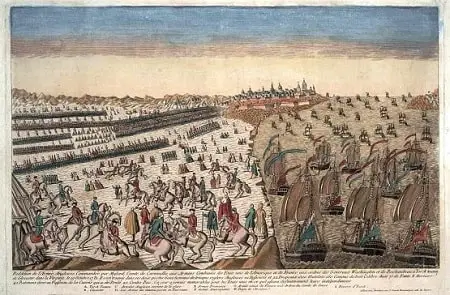
After the surrender, the American and French officers hosted a supper for the British officers.
The British officers were “overwhelmed” by their former adversaries’ courtesy shown to them.
The British navy dispatched by Clinton to rescue the British forces arrived five days after the fight ended, on October 24, 1781.
Washington dispatched Tench Tilghman to Congress to proclaim the triumph following the British capitulation.
Washington transferred his army to New Windsor, New York, where they remained until the Treaty of Paris, which effectively ended the war, was signed on September 3, 1783.
The Yorktown Campaign was decisive; there was no vital combat or campaign on the North American mainland after the Battle of Yorktown, and “the British Parliament had consented to terminate hostilities” in March 1782. However, the peace treaty was not signed for another two years.
Conclusion
The American Revolution resulted in the formation of the United States of America by the Americans in the Thirteen Colonies after winning victory over the British with the first constitutional liberal democracy.
The conflict was fought mainly in New York, New Jersey, and South Carolina, with over 200 skirmishes and battles in these three provinces.
However, battles were fought in all thirteen original colonies and the modern-day states of Tennessee, Arkansas, Indiana, Illinois, Kentucky, Alabama, and Florida.
After the defeat, General Lord Cornwallis surrendered his sword and troops to General George Washington and the Continental and French armies.
The last decisive battle of the Revolutionary War occurred in Yorktown, Virginia, on October 19, 1781, where the American and French troops gained victory over the British Crown.
